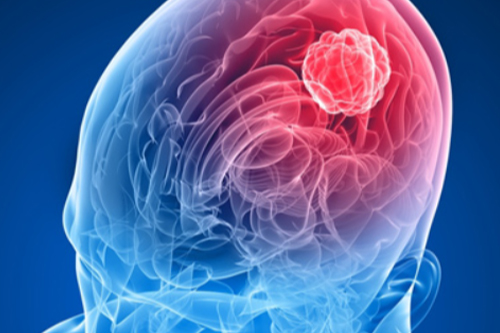
Neuro-oncology
Neuro-Oncology at Nagpur As a Nagpur-based oncology unit, Neuro-Oncology proffers an eerie journey into the world of brain and spinal cord cancers – a syndicate of strong diseases that can kill. Some among this gamut of potent neurological cancers are Astrocytomas, Glioblastoma multiforme, Gliomas, Pontine gliomas, Ependymomas, and Brainstem Tumors among many.
The prognosis for patients suffering from high-grade astrocytomas and gliomas of the brain stem is particularly bleak: survival periods are measured in months without treatment. However, with chemotherapy and radiotherapy support, some patients may manage to scrape a couple of years out from the precipice.
These may present either as new primary tumors detected in the nervous system, or as secondary tumors from metastasis, where cancer cells invade from another part of the body. Thus, In contrast to this, primary tumors may arise at any age, but most of them occur during prime age. First, Primary cancers generally favor males, except for meningiomas that slightly favor females. Secondary tumors, On the other hand can invade the nervous system through metastasis, compression or direct invasion from their point of origin.
Symptoms
Neuroendocrine tumors often initially remain under the radar, stealthily evading detection of signs and symptoms. The appearance of signs is influenced by the location of the tumor and whether or not it overproduces hormones.
Frequently, neuroendocrine tumor signs and symptoms can include the following:
- Pains brought on by the growth of the tumor
- Lumps that arise just beneath the skin
- Unusual sense of fatigue
- Unexplained weight loss
When neuroendocrine tumors cause overproduction of hormones (functional tumors), their symptoms can include the following:
- Redness in the skin
- Diarrhea
- More frequent urination
- Increased thirst
- Attacks of dizziness
- Shakes
- Rash on the skin
Types of Tumors in Neuro-oncology
- Primary Brain Tumors
– Gliomas: The most common type of primary brain tumor, originating from glial cells. Subtypes include:
– Astrocytomas: Including glioblastomas, which are aggressive and common in adults.
– Oligodendrogliomas: Less common, often slow-growing tumors.
– Ependymomas: Arising from ependymal cells lining the ventricles of the brain and spinal cord.
– Meningiomas: Tumors that arise from the meninges, the protective layers covering the brain and spinal cord; generally slow-growing and often benign.
– Medulloblastomas: Common in children, these tumors arise in the cerebellum and are considered malignant.
– Pituitary Tumors: Often benign adenomas that can affect hormone levels and vision.
– Schwannomas: Tumors arising from Schwann cells, often affecting cranial or spinal nerves (e.g., vestibular schwannomas or acoustic neuromas). - Secondary (Metastatic) Brain Tumors
– Tumors that spread to the brain from other organs, such as the lungs, breast, melanoma, or kidney. These are more common than primary brain tumors and require different management strategies.
Diagnosis
Diagnosing CNS tumors typically involves a combination of the following:
- Medical History and Physical Examination: Assessing symptoms and conducting neurological evaluations.
- Imaging Studies:
- Magnetic Resonance Imaging (MRI): The preferred method for visualizing brain and spinal tumors, providing detailed images.
- Computed Tomography (CT) Scan: Used for initial evaluation, particularly in emergency settings.
- Positron Emission Tomography (PET) Scan: Sometimes used to assess the metabolic activity of tumors.
- Biopsy: Obtaining a tissue sample to confirm the diagnosis and determine the tumor type and grade. This can be done through:
- Stereotactic biopsy: Minimally invasive technique using imaging guidance.
- Open biopsy: More invasive, involving surgical removal of part of the tumor.
- Molecular Testing: Analyzing tumor tissue for genetic mutations or biomarkers that can influence treatment decisions.
Symptoms of CNS Tumors
Symptoms of neuro-oncology conditions can vary widely based on the tumor’s location, size, and growth rate. Common symptoms include:
- Headaches: Often persistent and worsening over time, possibly associated with nausea or vomiting.
- Seizures: New-onset seizures may indicate a brain tumor, especially in adults.
- Cognitive Changes: Memory problems, difficulty concentrating, and personality changes.
- Motor Symptoms: Weakness or numbness in limbs, coordination problems, or changes in walking.
- Vision or Hearing Changes: Blurred vision, double vision, or hearing loss, depending on the tumor’s location.
Treatments
- Surgery:
- Tumor Resection: Surgical removal of the tumor, aiming for maximum resection while preserving neurological function. This is often the first line of treatment for accessible tumors.
- Debulking Surgery: Reducing tumor mass to alleviate symptoms and improve the effectiveness of other treatments.
- Radiation Therapy:
- External Beam Radiation Therapy (EBRT): Targeted radiation aimed at the tumor and surrounding areas to kill cancer cells.
- Stereotactic Radiosurgery (SRS): A non-invasive treatment delivering high doses of radiation to precisely targeted tumors (e.g., Gamma Knife, CyberKnife).
- Whole Brain Radiation Therapy (WBRT): Used for multiple metastatic tumors or as part of treatment for specific brain tumors.
- Chemotherapy:
- Systemic or localized chemotherapy may be used to target tumor cells, especially for certain types of brain tumors (e.g., glioblastomas).
- Temozolomide: An oral chemotherapy agent often used in conjunction with radiation for glioblastomas.
- Targeted Therapy:
- Treatments that specifically target molecular changes in tumor cells (e.g., bevacizumab for glioblastomas, targeting the vascular endothelial growth factor (VEGF)).
- Immunotherapy:
- Emerging treatments that harness the body’s immune system to fight tumors, including checkpoint inhibitors and vaccine therapies, are under investigation.
- Clinical Trials:
- Patients may be eligible for clinical trials that explore new treatments or combinations of therapies.
